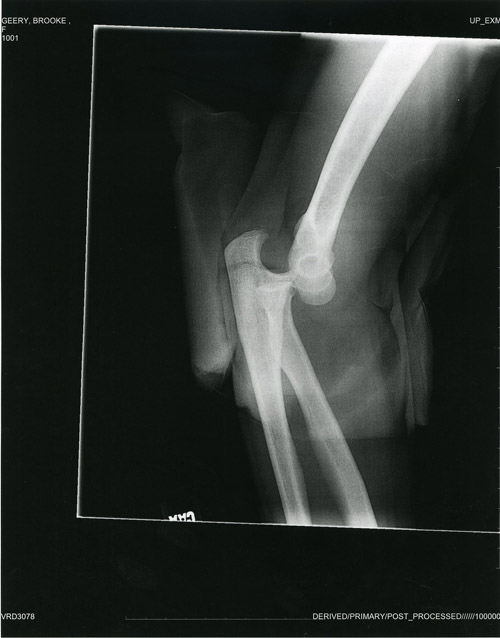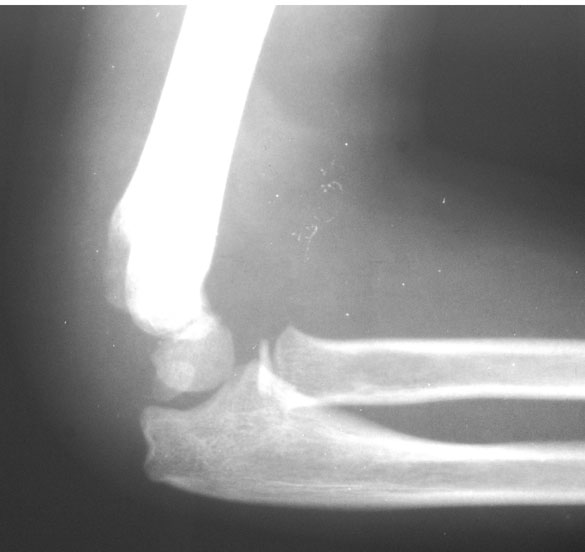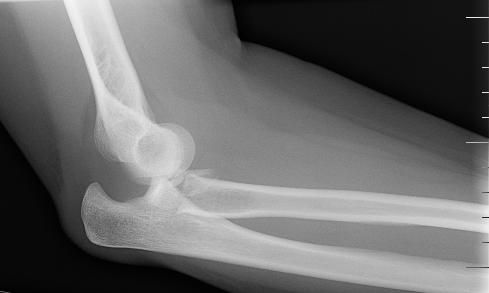|
Elbow Dislocation
  A
dislocated elbow is a serious injury that needs medical care. At home, put ice
on the elbow. This will help with the pain and will reduce some of the
swelling. But the most important thing to do is to see a doctor as soon as
possible. A
dislocated elbow is a serious injury that needs medical care. At home, put ice
on the elbow. This will help with the pain and will reduce some of the
swelling. But the most important thing to do is to see a doctor as soon as
possible.
As long as it doesn't delay treatment, you
can also check for a few signs that will show if the artery in the arm and the
nerves are intact.
- To check for the
artery, feel below your thumb at the base of your wrist. You should be able
to feel your pulse. Press on the tips of your fingers. They should blanch
(turn white) and then return to a normal pink color within three seconds. If
either of these tests is abnormal, seek medical care immediately.
- Three nerves run by
the elbow. Each nerve has portions that help with strength and feeling.
First check for strength by bending your wrist up as if you were saying "Stop"
(radial nerve function), then spread your fingers apart (ulnar nerve
function), then try to touch your thumb to your little finger (median nerve
function). If you have trouble with any of these tests, go to the doctor
immediately.
- Check for feeling by
touching all over your hand and arm. If any feeling of numbness results, see
a doctor immediately.
 Medical
Treatment for a Dislocated Elbow Medical
Treatment for a Dislocated Elbow
The doctor will reduce (put back in place)
your elbow by pulling down on your wrist and levering your elbow back into
place. This is very painful, so powerful pain medications may be given before
reduction.
After your elbow is back in place, the
doctor will get X-rays and then put you in a splint that will keep your elbow
bent. The splint will make an "L" around the back of your elbow. It will be
made of plaster or fiberglass. Its purpose is to prevent movement of your arm
at the elbow. Usually, your arm will be placed in a sling to help you hold up
your splint.
-
First Aid Case List -
back to top - |